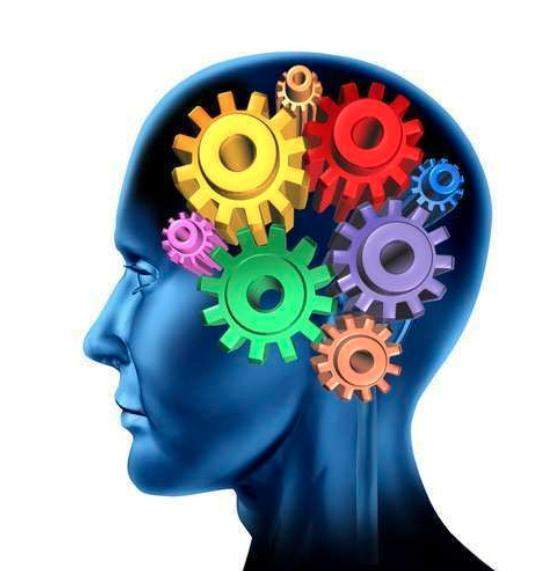Fluid intelligence and crystallized intelligence

- 3879
- 115
- Hugh Greenholt
In summary, The psychologist Cattell suggested two different forms of intelligence. Fluid intelligence is defined as the ability to solve new problems, use logic in new situations and identify patterns. On the contrary, crystallized intelligence is defined as the ability to use knowledge and experience learned.
The psychologist Cattell suggested two different forms of intelligence. The fluid intelligence It is defined as the ability to solve new problems, use logic in new situations and identify patterns. On the contrary, crystallized intelligence is defined as the ability to use knowledge and experience learned.
You may also be interested: concepts about the nature of intelligence index- Fluid intelligence and crystallized intelligence
- Conceptual similarities between Cattell and Horn
- Conceptual differences between Cattell and Horn
Fluid intelligence and crystallized intelligence
Fluid intelligence: It is the ability to adapt and face new situations in a flexible way, without previous learning constituting a determining aid for its manifestation. It is basically configured by primary skills: induction, deduction, relationships and figurative classifications, amplitude of associative memory and intellectual speed, among others. Reaches its maximum splendor before crystallized (in adolescence) and tends to decrease in parallel to the aging and deterioration of neurons. This capacity can be measured from tests that measure the biological potential that the individual has to learn or acquire knowledge.
Crystallized intelligence: It is that set of capacities, strategies and knowledge, which represents the level of cognitive development achieved through the subject's learning history. It is fundamentally constituted by skills related to verbal understanding, the establishment of semantic relationships, the evaluation and valorization of the experience, the establishment of judgments and conclusions, mechanical knowledge or spatial orientation. It depends on the experience, and thus a person will develop their crystallized intelligence to the extent that he invests his historical fluid intelligence in learning experiences.
Thus, the intellectual development potential with which a person is born (Historical fluid intelligence) will reach a greater or lesser degree depending on their educational experiences. You can also continue promoting age. Horn later reformulated the GF-GC model, integrating other scientific authors and paradigms such as Searman, Cattell and Pi. According to him, the development of the most basic cognitive functions (attention /perception and short -term memory) results in the capacities related to associative processing and the latter allow the appearance of fluid and crystallized intelligence. Among all these factors, information processing speed acquires a remarkable relevance.
Both Cattell and Horn consider that given the difficulty of studying all primary factors and the possible reductionism or limitation of studying only the most general factors or factor, the commitment of fluid and crystallized intelligence is to place between these two extremes, accounting for the common factors existing between the primary skills and in turn of the interrelations between these capabilities and the broader factors within its model. Although Horn, for example, considers that there are more second -order factors than those proposed by Cattell and with a different meaning.
Conceptual similarities between Cattell and Horn
The capacities are organized, at different levels of generality, and are interconnected. They state that there is no G Factor, which has been criticized by other authors since fluid and crystallized intelligence are not independent and have a correlation of 05. Both, from different primary measures, reach the same result (what validates it) of the existence of two factors of intelligence or second order (GF and GC) as well as the existence of fluid intelligence and crystallized as Factors of order superior to the rest of the second order. They agree that age influences skills throughout the life cycle and the effects of fluid intelligence on crystallized.
Conceptual differences between Cattell and Horn
The number of second order factors and the meaning awarded to each of them. Horn, to the five second order factors identified at the beginning, added another five more.
The heritability of GFY GC: Cattel considered that "historical fluid intelligence" was genetically determined and crystallized intelligence not; Instead Horn states that both are genetically influenced, and are inheritable, but with different influences.
The influence of capacities on the development of others: Cattel conceives that the historical fluid intelligence and the investment of this in learning experiences influence the development of the rest of the most elementary, first and second order skills; On the other hand, Horn understands that it is the simplest psychological processes that enable, in maturity, the development of the most complex abilities.
Main contributions from Cattell and Horn
Integration attempt at the structural models of intelligence. Applicability in the field of evaluation and in the realization of tests. Utility in the neuropsychological field. Presentation of an evolutionary intelligence model. Interest in the hereditary aspects of intelligence.
Most recent integrative hierarchies: Carroll Model. These try to integrate all existing structural models into only one.
This article is merely informative, in psychology-online we have no power to make a diagnosis or recommend a treatment. We invite you to go to a psychologist to treat your particular case.
If you want to read more articles similar to Fluid intelligence and crystallized intelligence, We recommend that you enter our personality and differential psychology category.
- « Consistency and cognitive dissonance
- Interpretation and collection of data from the research process in Psychology »

